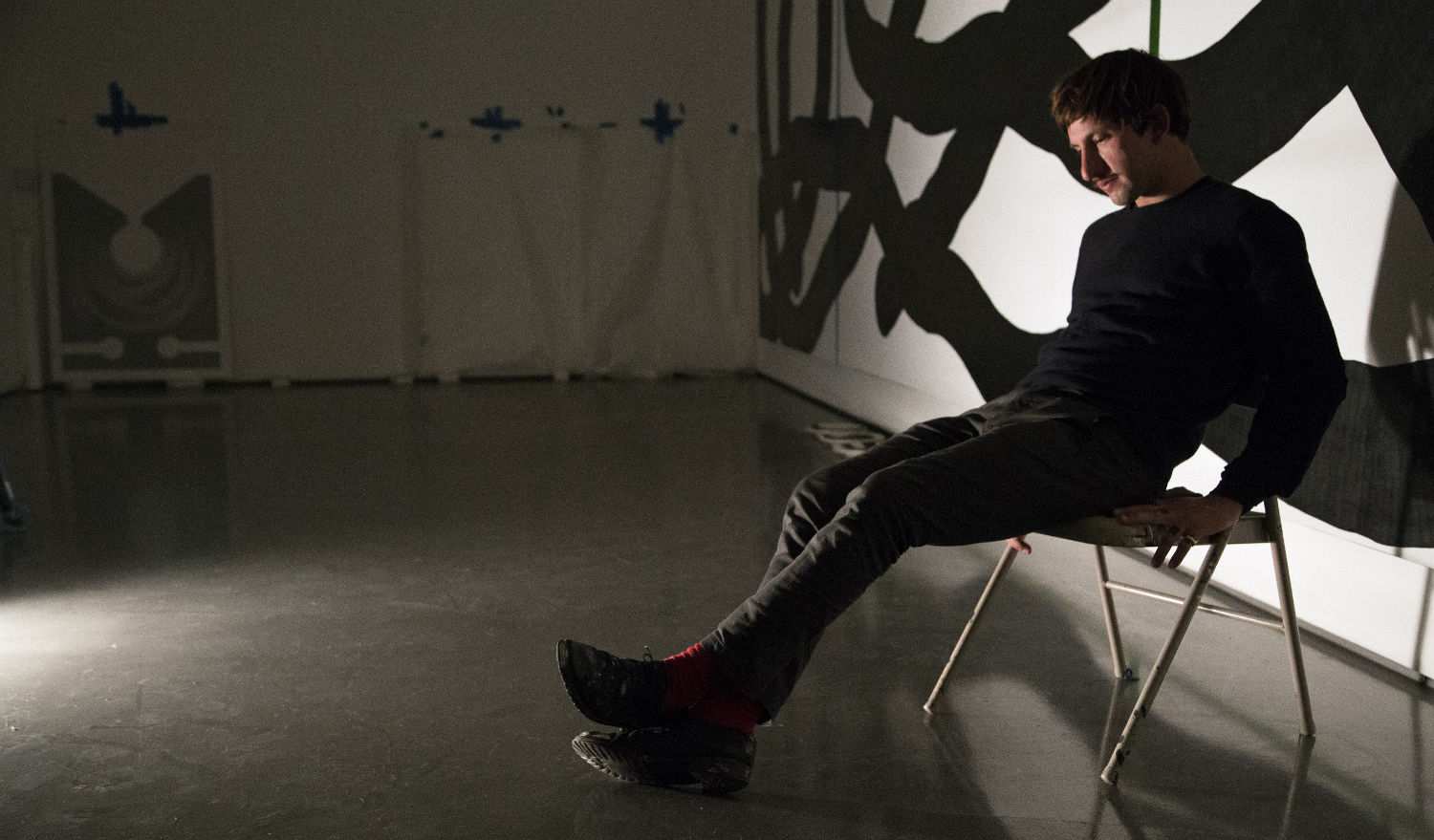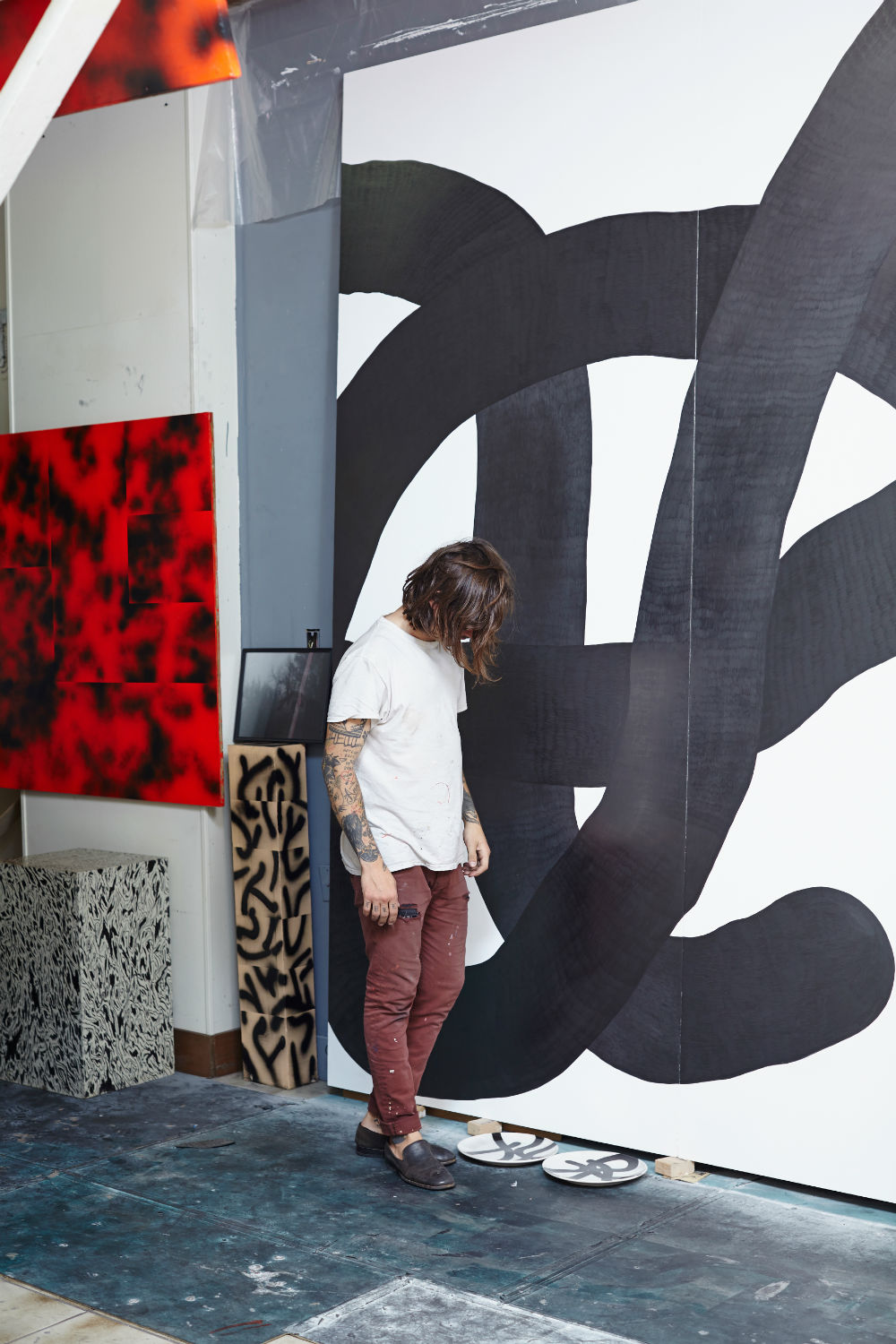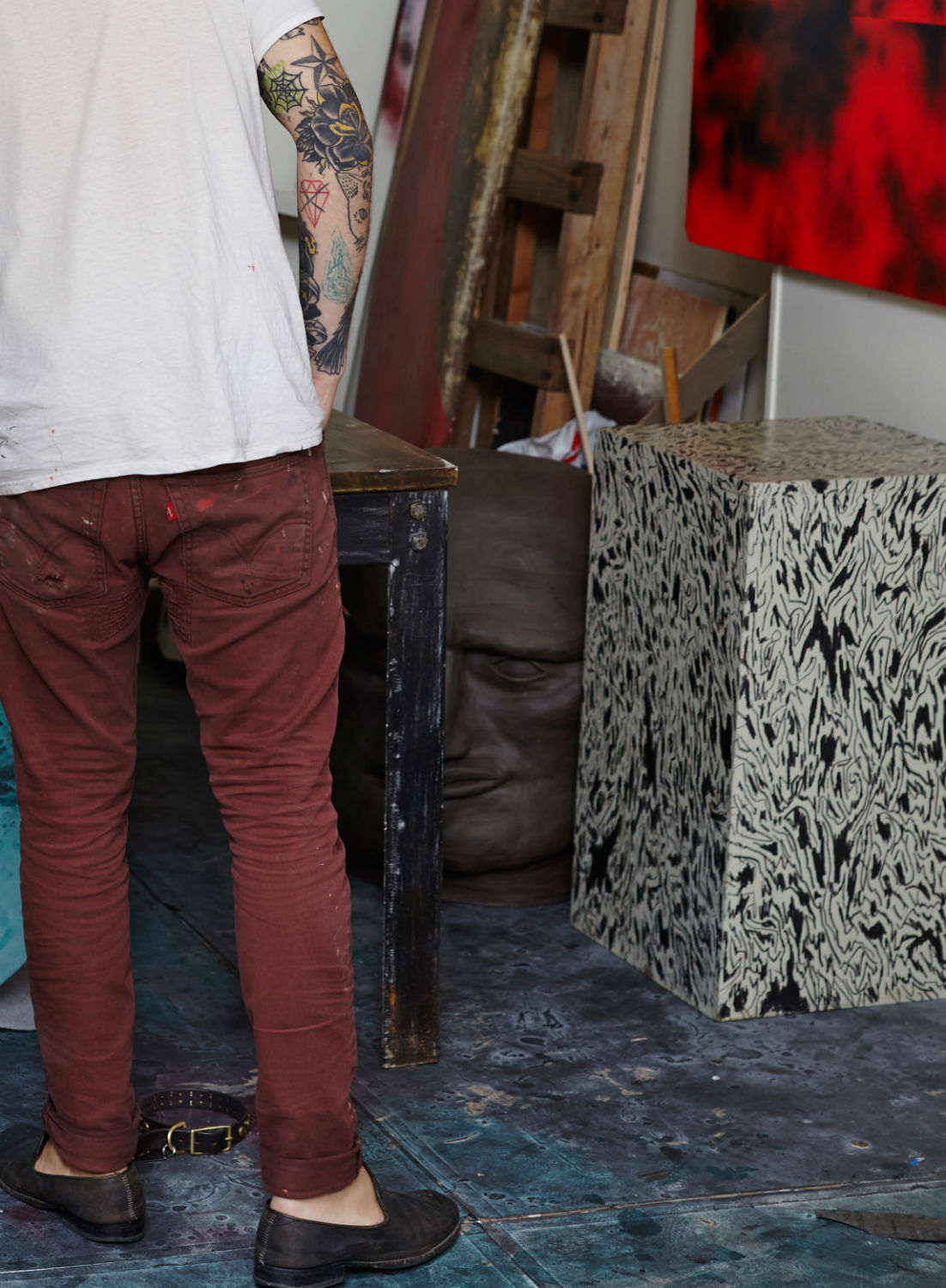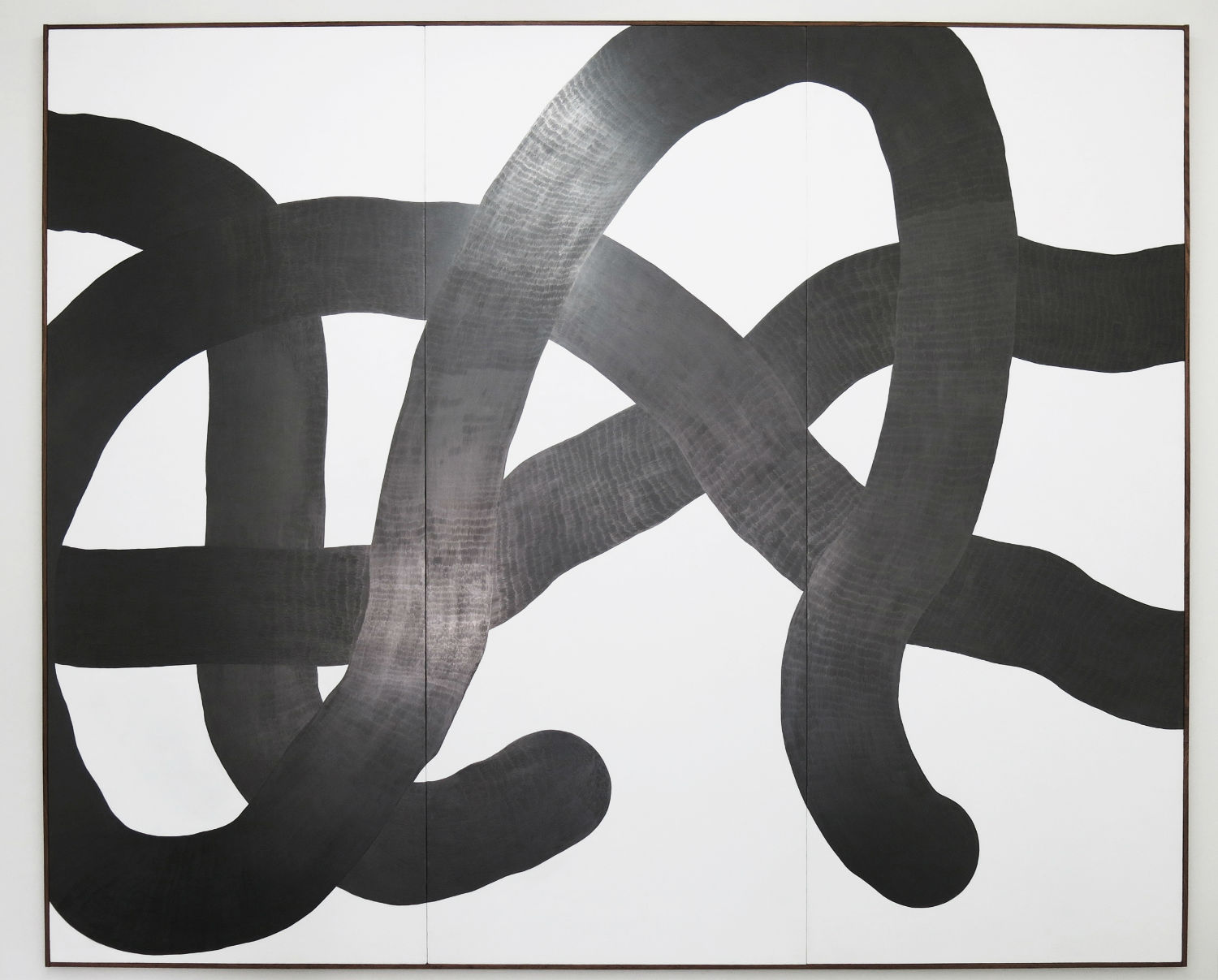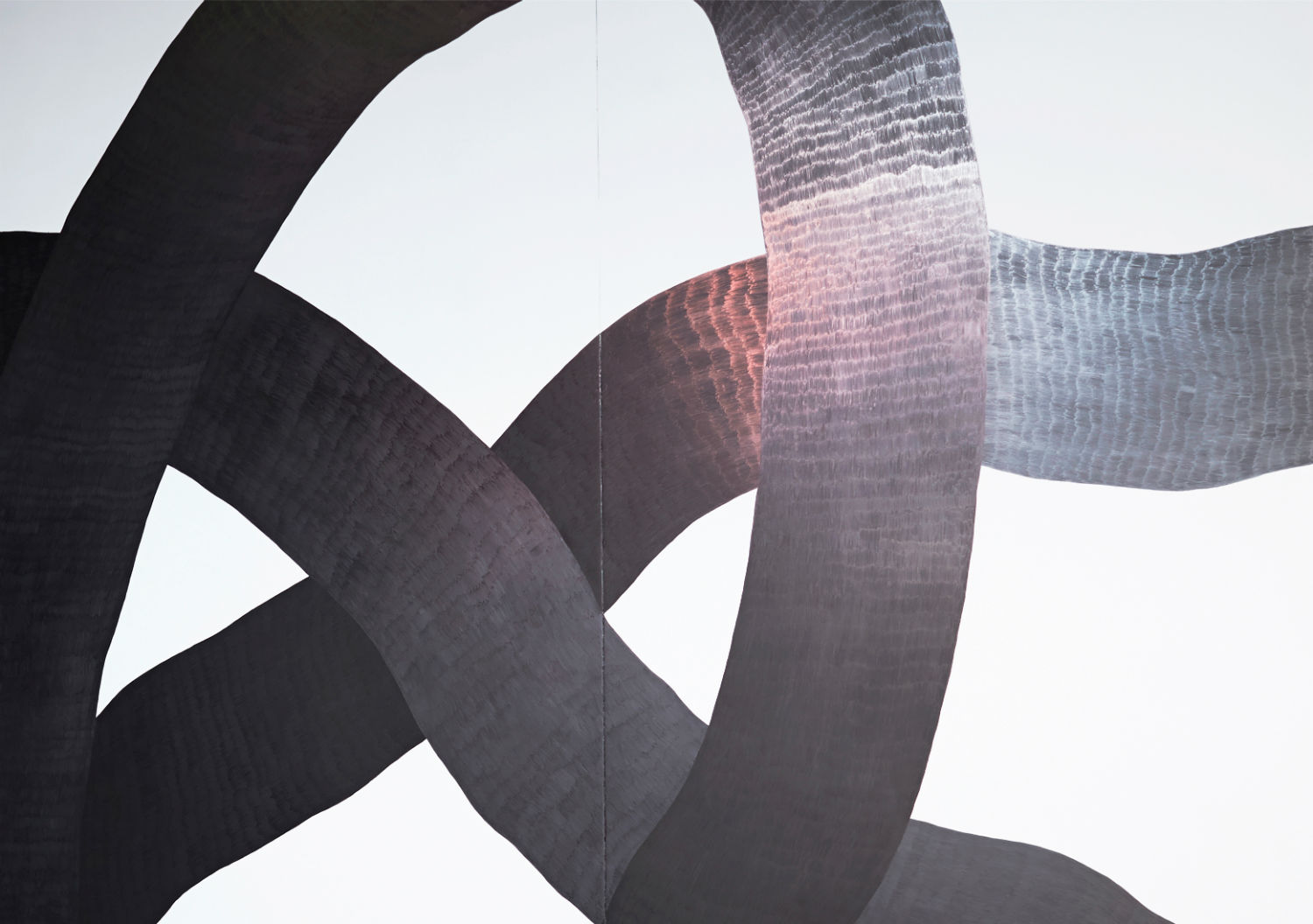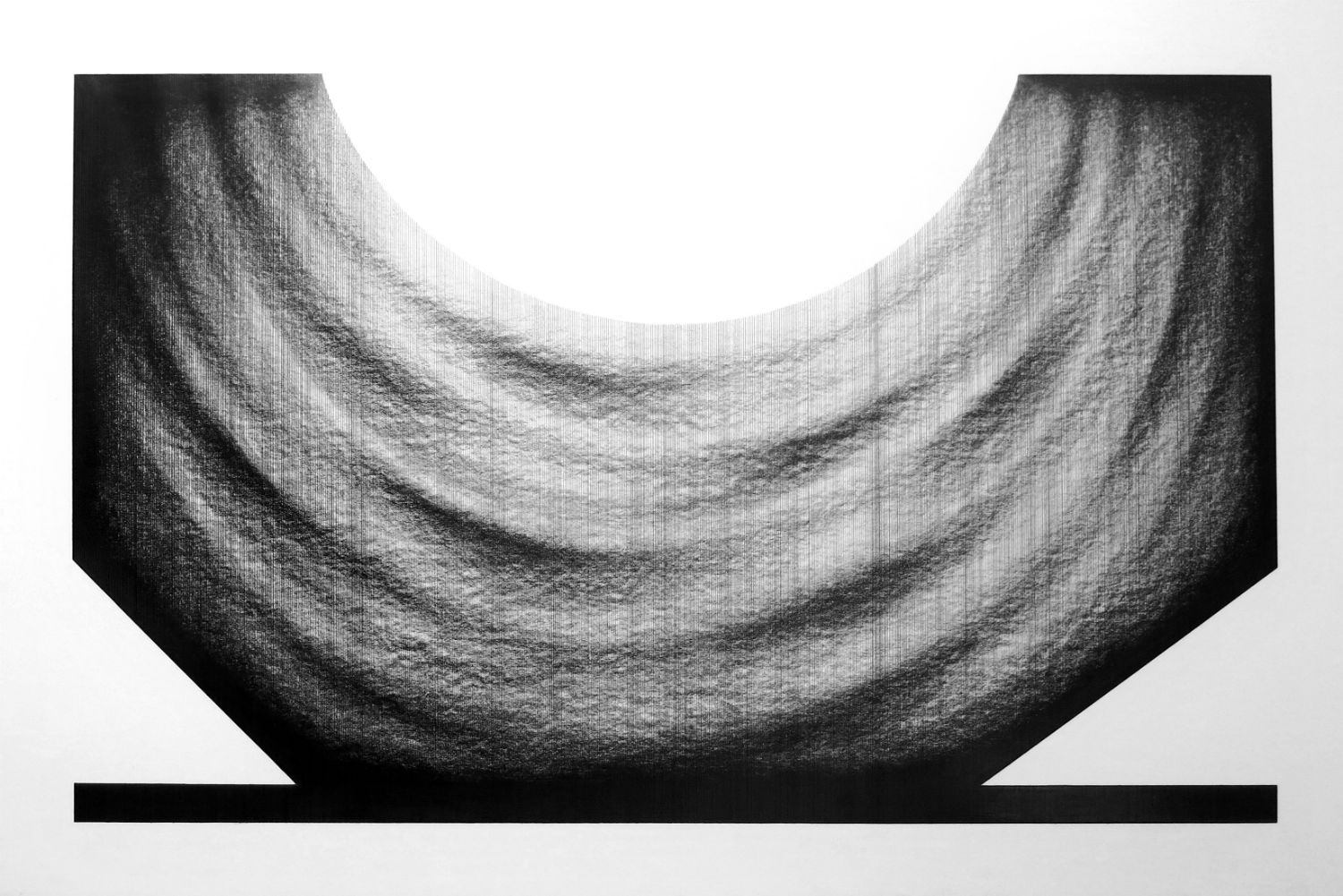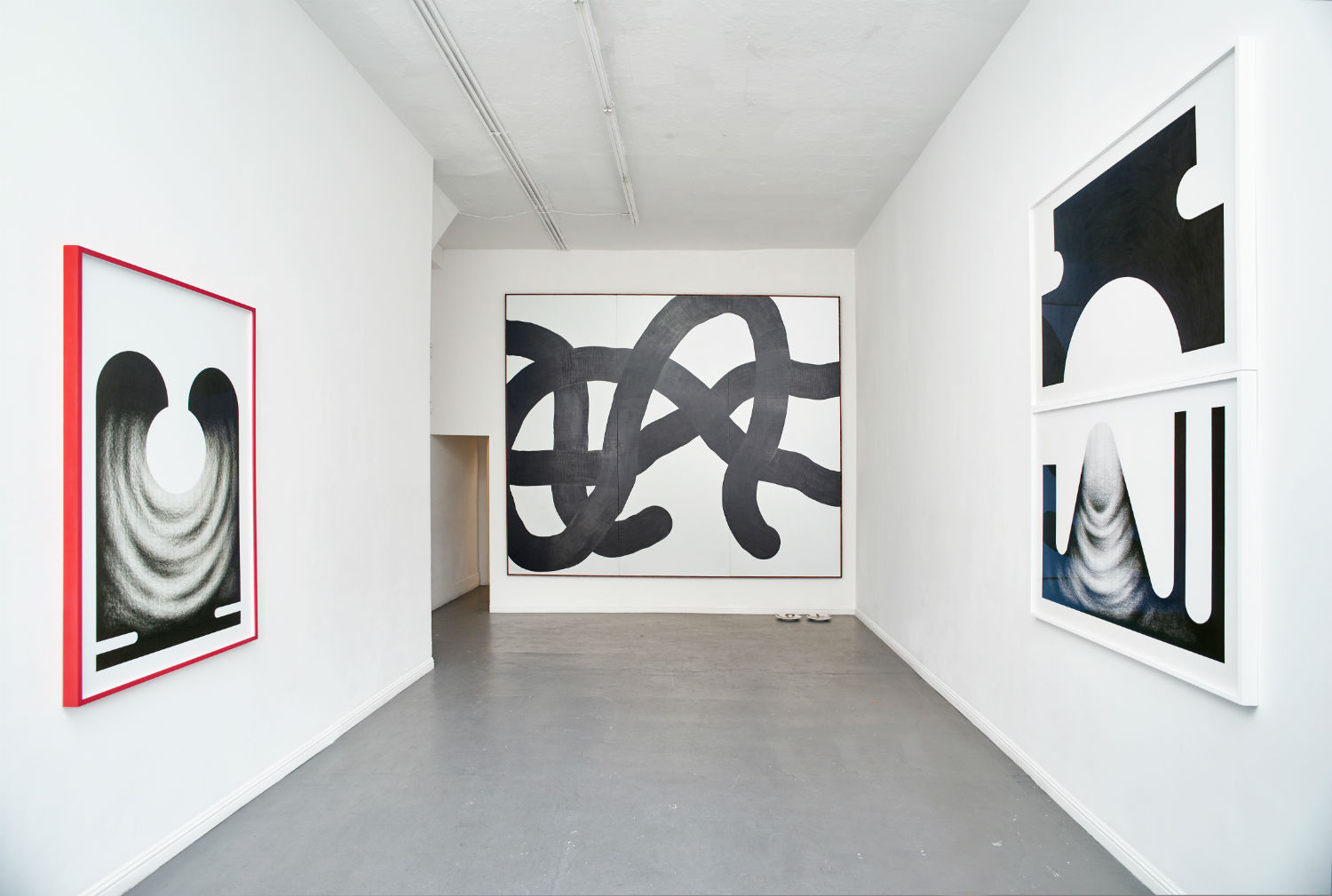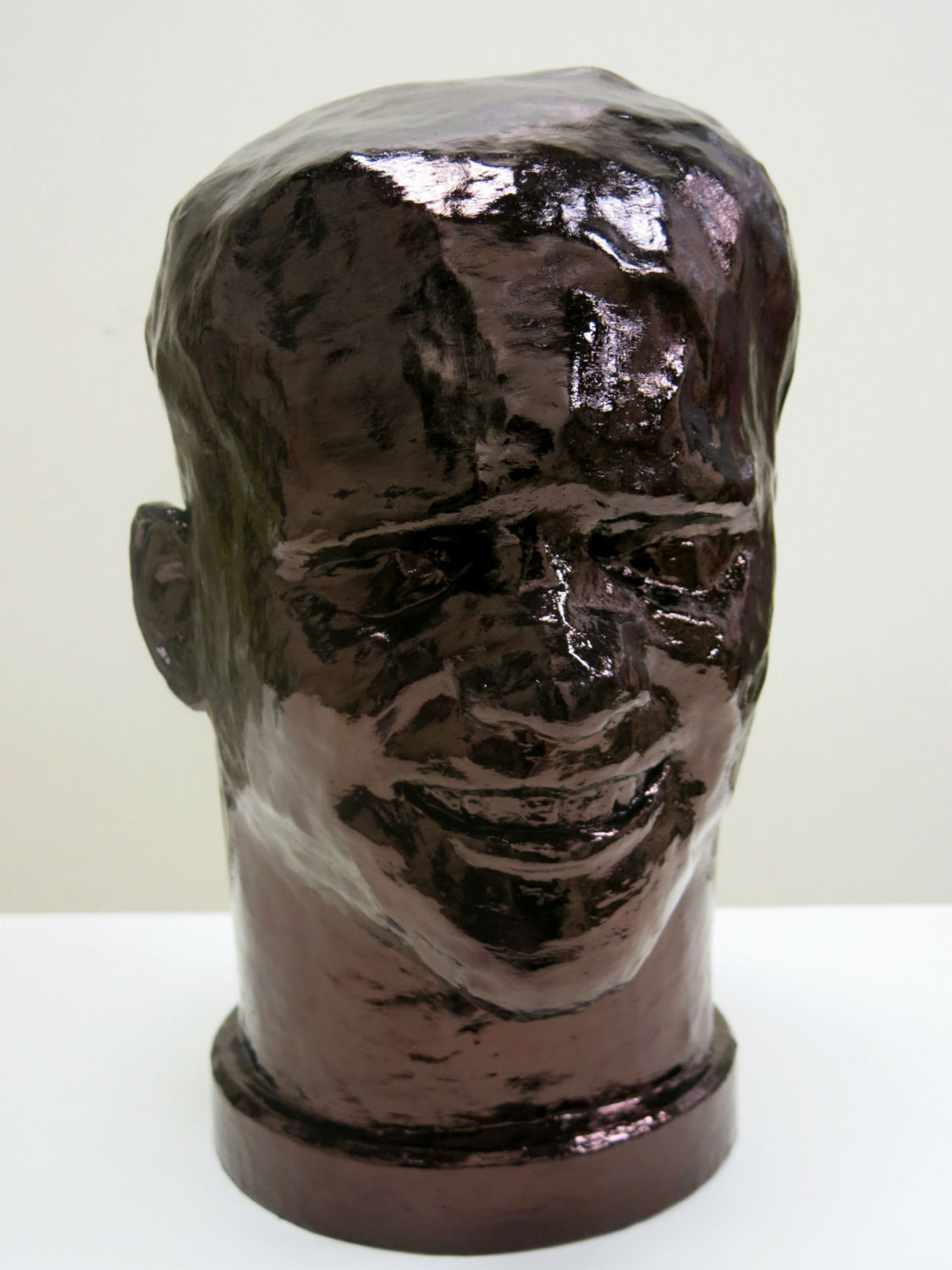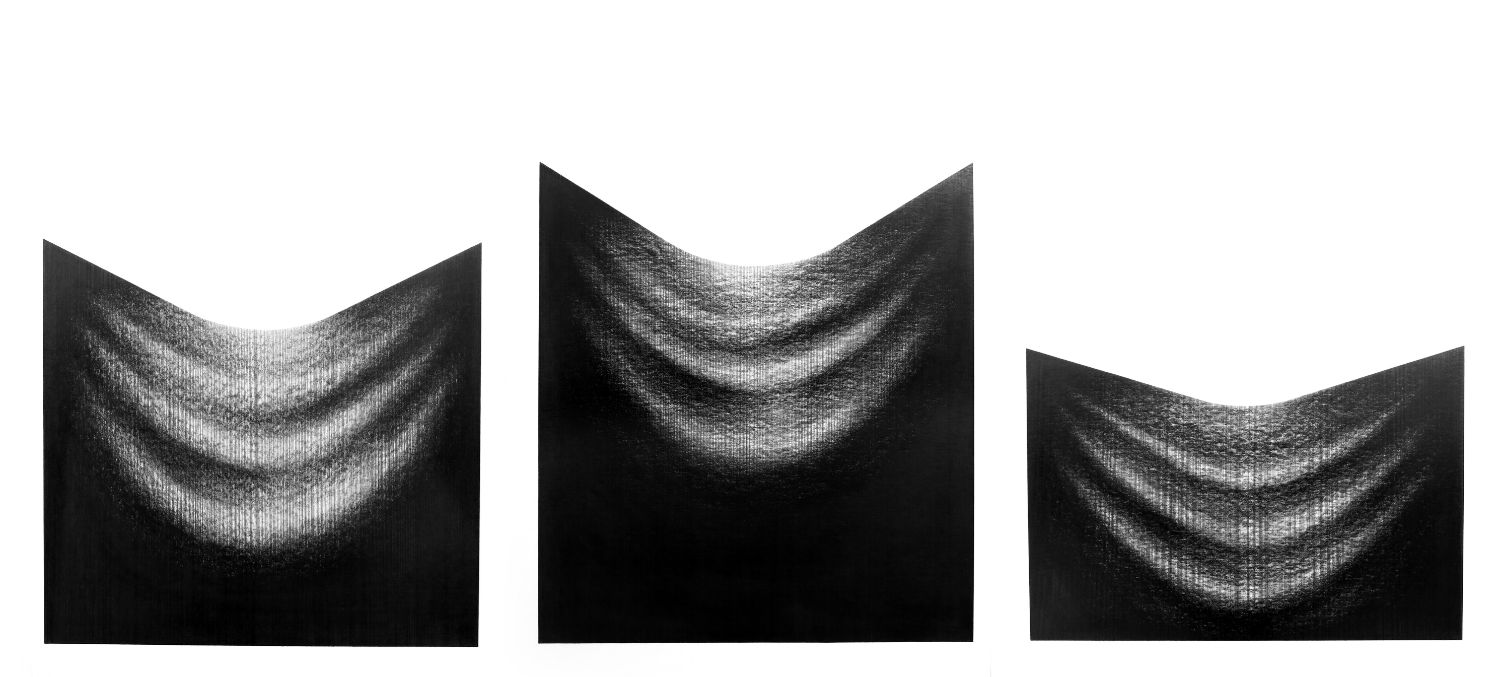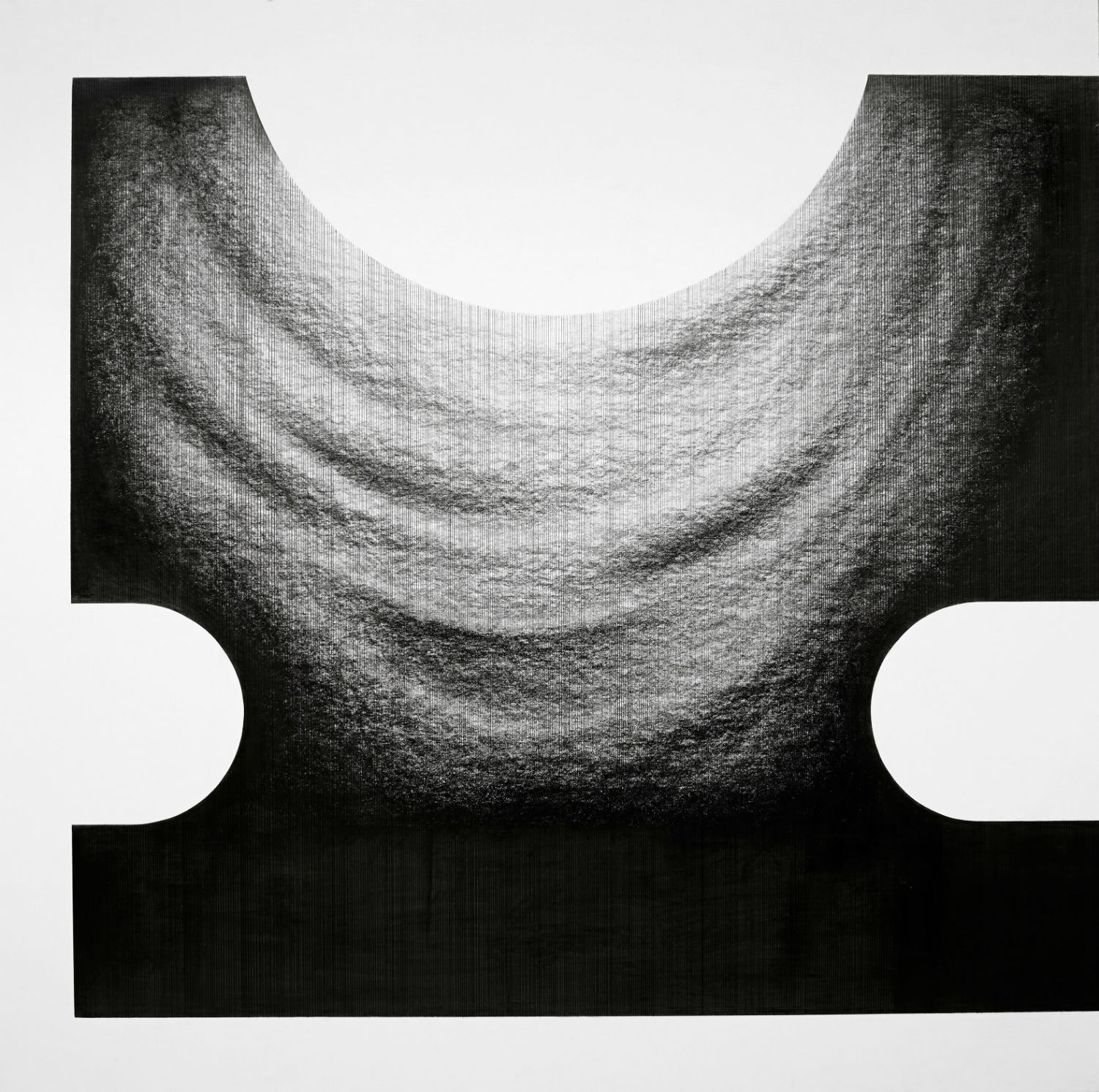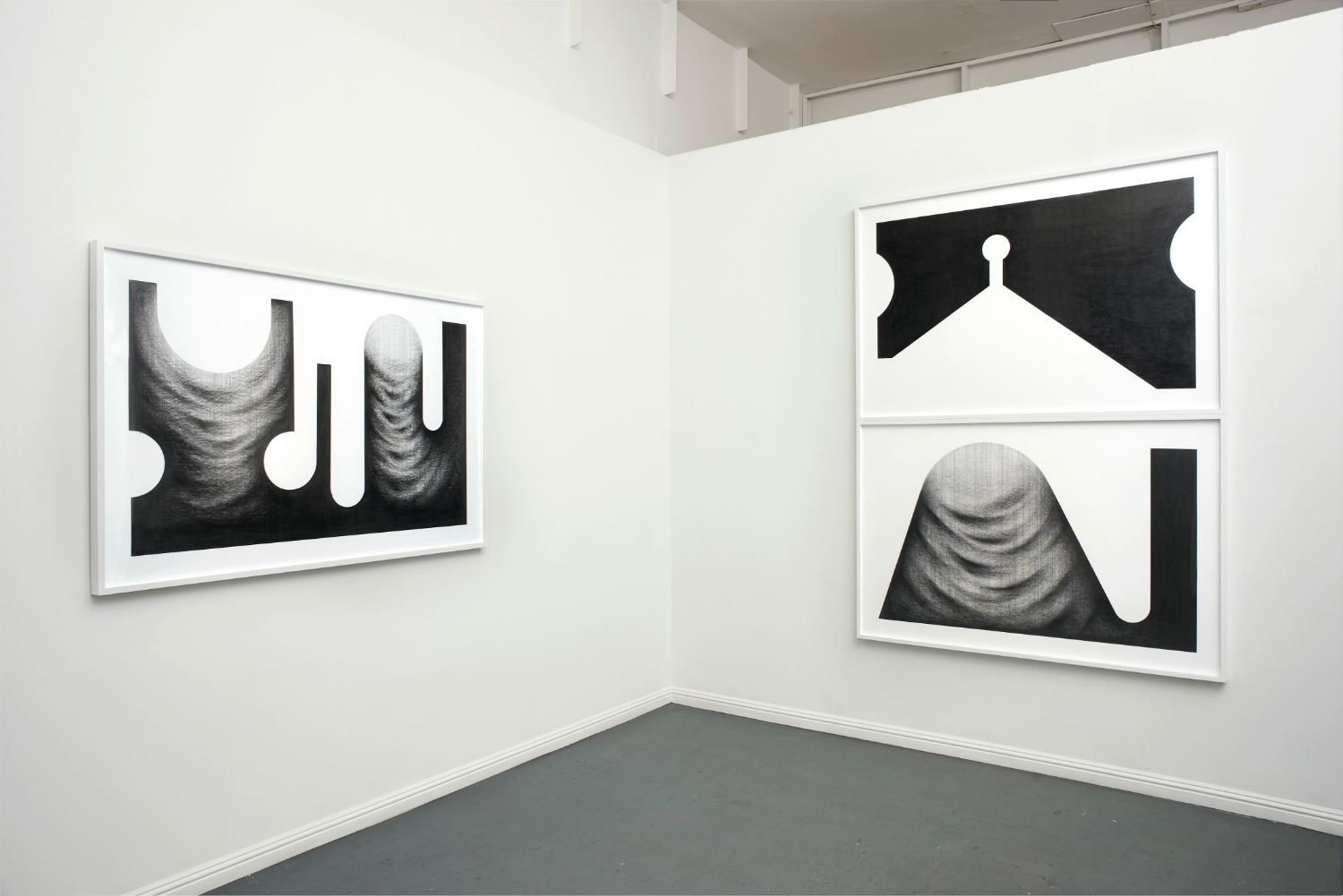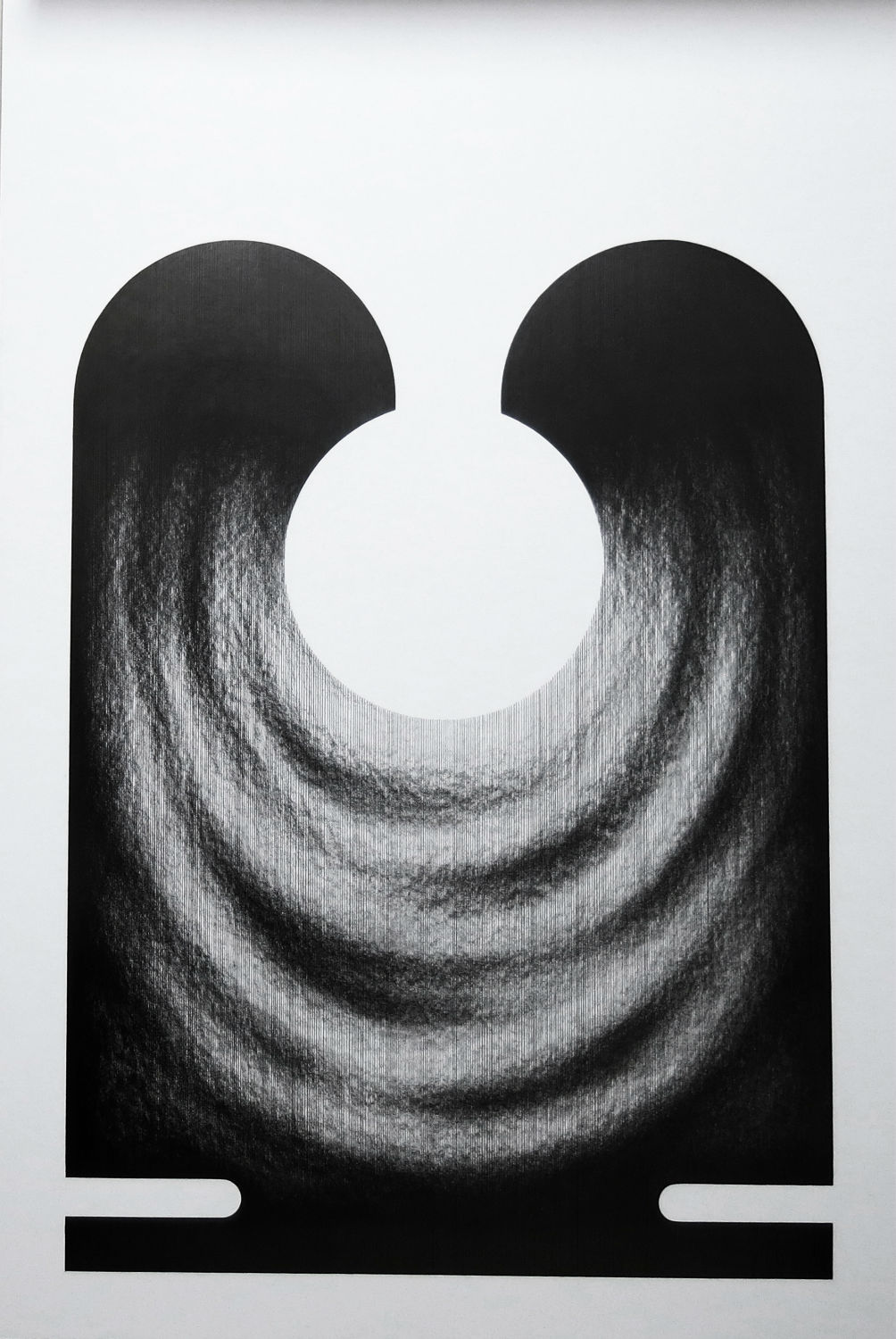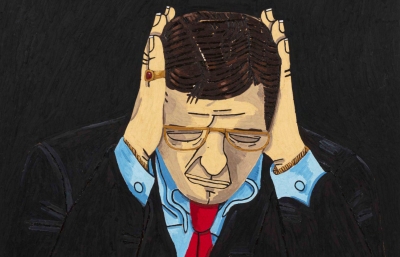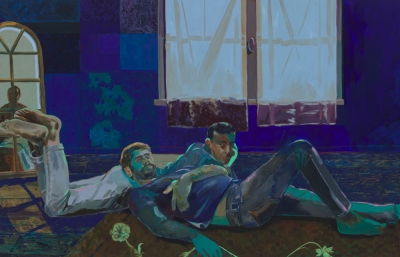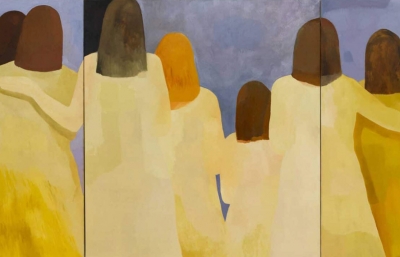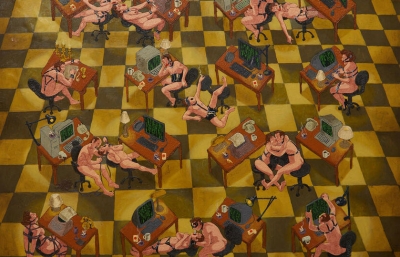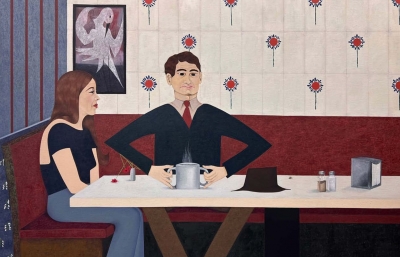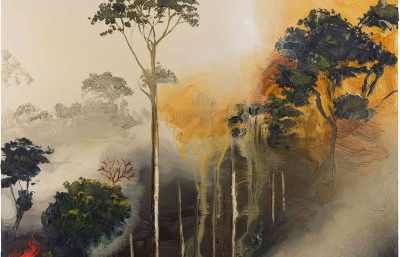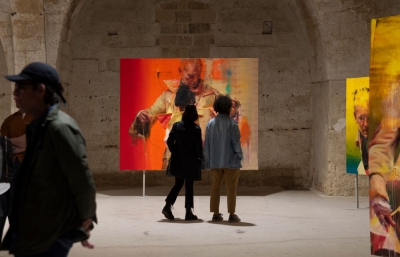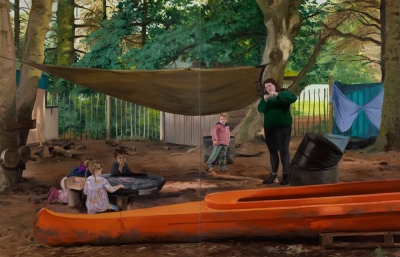Imagine an alternate version of the movie Home Alone in which an artist finds himself alone in a museum to experiment and tinker with art materials, and craft inventive work, as opposed to making booby traps to deter burglars. This is the current, strange reality of Francesco Igory Deiana.
A multistoried commercial castle that, for several years, held exhibitions by many of today’s most revered contemporary artists now serves as a massive temporary home and studio for the artist. As we visit over the phone, Francesco admits that his situation is “kinda crazy,” and strolling up to a large, shimmering glass facade to greet him in person, that becomes apparent. Making large-scale work would be difficult, if not impossible, to construct in any previous space the artist has worked in, so Francesco is on the verge of something big, and not just physically-speaking. Meticulously crafted, bold and dangerously delicate, his newest body of work is very imposing, with seductive details most fully experienced in person. Francesco says, “At least when people see my work in person, they will always be surprised in a good way.” —Austin McManus
This is an excerpt. Read the full interview in the August, 2016 issue of Juxtapoz Magazine.
Austin McManus: What compelled you to move to the U.S. from Italy at the age of 21? Was it the waves?
Francesco Igory Deiana: I came to the U.S. for different reasons, one being that I was trying to build up an art career as an Italian in Italy. In between the economy and the provincial mentality, it was going to be very hard. Obviously things are working better here, plus I was ready to expand my experiences, visions and learn something new.
What were some of the most evident cultural differences you first noticed, and what have you enjoyed most about life in California?
I don’t even know where to start. Every cultural thing is so different than the way I grew up in Italia. But I’ll tell you what, the thing I love the most about California is the freedom of being yourself no matter how weird and different you are. I feel like people here will respect you if you’re determined about what you’re doing, no matter how crazy you are.

Being in California makes surfing a lot more accessible. How often do you make it into the water, and what do you feel is the most beneficial aspect of surfing regularly?
At the moment, I’m working on a project in LA, and since it takes over an hour to drive to surf spots, my surfing has been very limited, but I surf as much as I can. Sometimes four days a week, sometimes two and sometimes seven, but it’s more related to my work schedule or if I’m busy with a project, or depending on the wave conditions. It’s always good for me as a routine and exercise, and I can always find something to surf. Sometimes you just have to use a little bit of imagination, but it works. It’s the time of the day where I can disconnect and cut out all the problems and preoccupations, literally space out and be immersed in the deepest nature that makes me feel alive, surrounded by my beautiful friends.
You recently went on a surf trip with a large group of friends in Australia, which sounds incredible. Any highlights or anecdotes from that adventure?
I mean, the whole trip was a highlight, to be honest. Being on the road with some very special people for ten days was so amazing. We traveled on the east coast, from Noosa to Sydney. I didn’t think that part of Australia would be so tropical. We didn’t stop moving, surfing and going mental for a second, and we were lucky enough to have a local tour guide, Ellis Ericson, to show us around. I went on an adventure in the tea tree forest to look for koalas but didn’t have any luck.
Your most recent show, Haptic Render, included a number of large-scale graphite drawings, as well as a sculptural installation that optically challenged viewers. What were some of the ideas behind these works and what do you feel was the greatest success of this body of work?
I’m not sure what I would call the greatest success of this work. Some of my latest work in graphite translates digital gestures into analog forms. The result is a fundamental tension between the geometric and painterly, the planar and the abstract, soft and hard, noise and information, space and flatness. The transcribed shapes are mainly an evolution of my designs; every shape is different and sometimes calls to mind references to architecture, as many of my drawings also function as maquettes for potential sculptures. I can envision them as huge metal cutouts. The installation in the show, Haptic Render, was supposed to look like a sculptural project done with a 3D program, like a prototype, a vision for something bigger. The influence from architecture is a central tenet of these works, stemming from my childhood in Italy where I was surrounded by the tension between the historic and the progressive change that architecture renders upon the visual landscape. I guess these recent drawings offer the viewer a commentary on the way in which our increasing dependence on the computer and its simulacra has eclipsed the primacy of human relationships.
These graphite works are very fragile and unforgiving because of the medium. You really have to be mindful about every step, or a little error can cost the entire piece. Have you had any meltdowns or freak-outs ruining any work? I know I would...
Yes, I do. I can ruin works at any moment and I go crazy! It’s funny because people think that I’m a very precise person. I’m actually a complete mess, but I challenge myself at all times. It’s part of my personality. Nothing is measured and done with the right tools in my process. It’s more about how mental I go and what I want to accomplish. Very performative.
Your chosen materials render work that is extremely labor-intensive, with painstaking details. Why do you prefer using graphite and ballpoint pens to create these large, bold geometric shapes when other mediums would achieve a similar result in minimal time?
Sometimes I ask myself the same thing, but like you said, I would achieve only a similar result. The process of my work shows in the final product so much, becoming a big part of it and often conceptualizing my pieces. The obsessive repetition of marks, in scale with the specific works I’m creating now, wouldn’t be the same done with regular paint. But after saying this, I want to underline the fact that I actually do use many other materials as well. My work process is always mutating and evolving. I could start a list of all the ones I’ve used. I think that every material works good for something, I wouldn’t want to be associated specifically with one of them, but yes, until now, graphite and ballpoint pen have been a big part of my process.

As we mentioned before, your work can’t be fully appreciated unless it is observed in the flesh. The texture, gestures, scale and scope are not fully realized when reproduced in other media.
Yes, totally. I have to live with it, though. Sometimes it is the opposite. There’s art that looks so much better photographed. At least I know when people see my work in person, they will always be surprised in a good way. It’s just hard to document with reflections, glass, light, etc. I feel like this is part of my process, struggling in every way and direction. I can’t ever find peace.
Since I was a kid, and to this day, those cheap blue BIC ballpoint pens have been my go-to for all my doodling. You use ballpoint pens because they’re accessible and affordable, right? Do you have a preference for what pen you push?
I use ballpoint pen because I find it to be a really interesting material, very accessible and common, and that’s probably one of the reasons I started to use it. But I’ve always thought that the density of the ink and the shine of it were amazing. The most fascinating thing for me in art is how you can study your own way to use materials and interpret your work. When I started to use ballpoint pen, I was thinking I could make something happen that no one has ever done with the most common tool on earth, in a different way. In the end, I think I’ve done that. I’ve never seen anybody making the work I was making with a pen, pushing only in one direction, creating graphic work on that scale and covering sculptures with it. I haven’t used ballpoint pen in a while now. I will definitely use it again, but that era kind of ended for me. The last work I’ve done is the biggest I’ve ever accomplished, and is a shaped loop, 60’’ x 40”. It took me so long to finish that I’ve never been able to show it because my whole work process changed by the time I was done. I like that idea. Now it’s sitting in my studio, and one day I will be happy to pull it out eventually. However, I don’t think that the time I spend on making an art piece is relevant at all. As a brand, I’ve used PaperMate. I liked how the ink would come out, but really, it’s small details and I can’t say I advise to use those pens. It’s just my own habit.
It would be almost impossible to know, without being acquainted with you, about your obsession to draw heads that you don’t show publicly. What’s the fascination?
I love how expressive a face can look, and I play with that a lot. It’s the easiest way to translate my feelings in a very readable and instinctive way. I used to be more open with showing heads here and there, but simply, at the moment, they wouldn’t look good next to the work I’m doing. At the right time, I will make a whole project out of that, for sure. I was talking to my friend the other day and she was reading an interview I had done. She made me realize how much of a mask I wear, how much I never show the more natural and loose part of myself in my works or words. She said, “In this interview, it’s totally you, but it’s your ice cold side. You are actually a complete disaster, always on the edge. It’s such a contrast of yours, I think you should reveal both sides of your personality more. It’s what makes you special.” I think that’s what my head drawings represent: that side of me.
Many artists I know are constantly over-analyzing and doubting their choices and efforts regarding work and career, even the financially successful ones. What is, or has been, your most challenging aspect of pursuing art?
The economic side may be the most challenging part for me because, at the end of the day, if making art is what you rely on to survive, so much is compromised, but it’s also the only thing I want to deal with. I think money doesn’t have anything to do with the artistic skills that a person might have, but being a self-made artist in 2016 without economic backing scares me every day. Also, the fact that to be an artist today you basically have to run a business is very hard for me and many others. As a perfect example of a creative person, I’m completely up in the air and not good at managing any type of bureaucracy. For the rest, I overanalyze everything I do. I’m so critical and hard on myself. When you are exposed to the public, all the choices you make are going to be viewed, examined and criticized, but all this is more part of the game for me, not easy, but part of it.
For more information, visit neverendingstruggle.com
----
Originally published in the August, 2016 issue of Juxtapoz Magazine, on newsstands worldwide and in our webstore.

